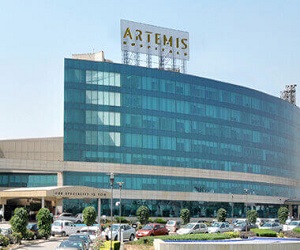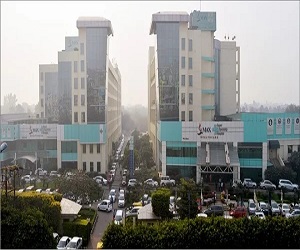Coronary angiography, also known as a coronary angiogram, is a diagnostic procedure that uses X-ray imaging to visualize the coronary arteries, the blood vessels that supply blood to the heart. It is commonly performed to detect obstructions or blockages in the heart’s blood flow. Another term for this procedure is cardiac catheterization. Coronary angiography serves both diagnostic and therapeutic purposes, allowing healthcare providers to identify and treat heart and blood vessel problems.
Before the procedure:
Before the angiography process begins at Hospital, the cardiac surgeon will review your health history, including any allergies and medications you use. Additionally, your blood pressure and pulse may be checked as part of the team’s physical examination.
Additionally, you’ll be asked to change into a hospital gown and empty your bladder before the procedure. Contact lenses, glasses, jewelry, and hairpins may need to be removed for safety reasons.
During the procedure:
During the procedure, you lie on your back on an X-ray table. Safety straps may be placed across your chest and legs as the operating table may tilt during the surgery. Cameras used for X-rays move from top to capture images from different angles, covering your chest and head.
An IV line is gently inserted into a vein in your arm to deliver a sedative, along with other necessary medications and fluids, to help you relax during the procedure. While you may feel very tired and occasionally nod off due to the effects of the sedative, you can still be easily awakened if needed to follow any instructions given by the medical team.
During the operation, electrodes placed on your chest monitor the activity of your heart. Your blood pressure is continuously monitored using a blood pressure cuff, and the oxygen levels in your blood are measured with a pulse oximeter. If necessary, a small area of hair may be shaved from your arm or groin, where a flexible tube (catheter) will be inserted. This area is then cleaned, disinfected, and numbed with a local anesthetic injection.
In order to implant the short plastic tube (sheath) into your artery, a small incision is made at the entry site. The sheath is used to implant the catheter into your blood vessel, where it is then gently threaded to your heart or coronary arteries.
After the procedure:
Once the angiography is completed, the catheter is carefully removed from your arm or groin, and the incision is sealed using manual pressure, a clamp, or a small plug.
After the procedure, you will be taken to a recovery area for observation and monitoring. Once your condition is stabilized, you will be transferred back to your own room, where you will be periodically checked by medical staff.
If the catheter was inserted into the groin, it’s important to remain still and lie flat for several hours to prevent any bleeding. During this time, pressure may be applied to the incision site to stop bleeding and promote healing.
Depending on your condition, you may be discharged from the hospital on the same day or required to stay overnight. It’s important to drink plenty of water to help flush out the dye from your body. If you feel hungry, you can have a light meal.
Coronary Angiogram Treatment cost in India are as follow
| Treatment | Cost in USD | Hospital Stay |
| Coronary Angiogram | 180 | 0-1 Day |
| Peripheral Angioplasty | 1500-2000 | 1-2 Days |
| Coronary Angioplasty | 4500-6500 | 0-1 Day |
| Peripheral Angiogram | 200 | 1-2 Days |
| Renal Angiogram | 150 | 0-1 Day |
Frequently Asked Questions
Q: Will I need any tests before the procedure?
A: Yes, before a Coronary Angiogram, you may need blood tests, an electrocardiogram (ECG), and a chest X-ray.
Q: How long does the procedure take?
A: The duration of a Coronary Angiogram typically ranges from 30 minutes to 1 hour. However, it may vary depending on factors such as the complexity of the procedure and individual patient factors.
Q: Can I eat or drink before the procedure?
A: No, you typically cannot eat or drink anything for several hours before a Coronary Angiogram procedure.
Q: How do I choose a hospital Coronary Angiogram in India?
A: Kindly share your report














